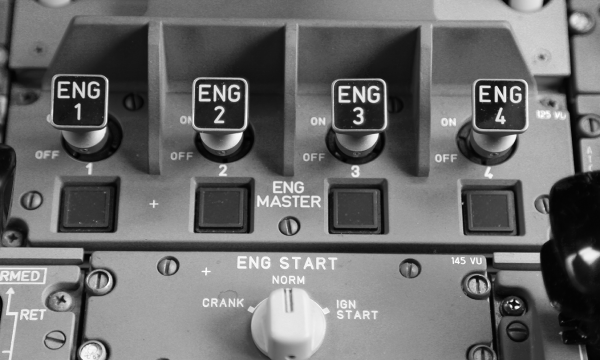Continuous price increase.
Fuel expenses are one of the largest cost blocks in airline operations. For more than thirty years, we have seen a continuous average increase in the price of fuel. In addition, since 2000, there has also been considerable price volatility, which includes both opportunities (hedging) and risks (e.g. planning risks but also hedging).
Environmental aspects are added.
With rising fuel prices, growing competition, increasing legal regulation and declining profit margins, the topic of Fuel Conservation has been of particular importance within airlines for many years. In addition, greenhouse gas emissions are proportional to fuel consumption. This is not only an important environmental aspect, and thus an increasing customer or product aspect, but emissions are also increasingly being sanctioned.
No standard solutions.
Many airlines have been using “standard solutions” for many years, such as adjusting airspeed, single-engine taxi, using certain flap positions for landing, restricting APU usage and much more. However, we have observed that many of these measures are often not based on an all-encompassing analysis. While fuel is obviously being saved, costs are being incurred elsewhere, often hidden, which cancel out the overall effect of the measure. An obvious example: A restriction of APU runtimes leads to fuel savings, but also to increased APU cycles. Similarly, single-engine taxi can lead to an increased thermo-mechanical load on the engines if applied incorrectly, which in turn is reflected in long-term fuel consumption and maintenance costs. An adjustment of the airspeed can lead to disadvantages in ATC sequencing or can be cancelled out by ATC anyway via speed advisories and thus remains without or even with negative effects – experience shows here that the effects expected from this are usually greater than those proven in practice. A no-bleeds takeoff can save fuel, but may lead to additional structural stress, depending on the aircraft type. We have also seen measures that were established without manufacturer recommendations and due to lack of knowledge of the technical context, for example: Flights with a continuous Air Conditioning setting in ECO (on Airbus A320) may lead to inadequate ventilation of the cabin insulation and may result in maintenance costs, quite apart from the fact that this setting is sometimes not taken into account by the system anyway depending on certain parameters.
Total cost saving is the goal.
Rather, a successful Fuel Conservation Program is a total cost savings program. Part of this is the optimal management of operations, a product optimized according to fuel-saving aspects and customer needs, a targeted fleet strategy, coordinated cooperation with other process participants such as ATC or the airports and much more.
Marketing effect not to be underestimated.
‘Do good and talk about it’ says an old German figure of speech. The ecological footprint of products and services is increasingly gaining influence on peoples’ purchasing decisions. Airlines in particular are always in focus in this regard. A responsible use of resources not only has an influence on the costs of an airline but also a marketing effect that should not be underestimated.
You can rely on us.
We at GMP have the necessary knowledge in the field of fuel conservation, have strategies and concepts as well as many years of experience in increasing efficiency and optimizing costs in small and large operations. Trust in professional instead of isolated solutions and individual measures.







